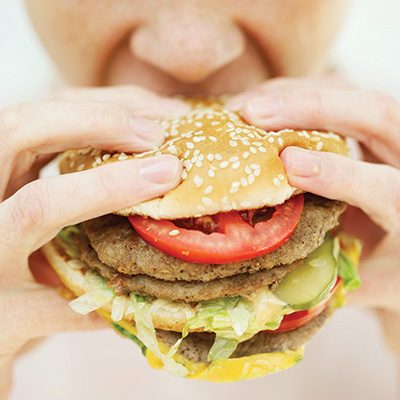
Getting kids to eat right is a struggle for most parents. Our own 8-year-old, Nick, loves chicken nuggets and fries but won’t eat a vegetable. Nick is not alone. For many children, particularly in inner cities, it isn’t a question of whether they like nutritious foods, but rather getting access to them.
There is an epidemic in this country, and it has implications for all of us. Our children are too heavy; many are obese. In New Jersey’s cities, the problem is particularly severe. Too many kids think fast food, potato chips, and soda constitute a proper diet. Thankfully, there is a growing movement to change this.
One of the dedicated professionals addressing the issue is Barbara Mintz, director of clinical nutrition and wellness at Newark Beth Israel Medical Center in Newark. I recently spoke to her about what we could and should be doing differently.
What are the challenges facing children in inner cities when it comes to eating right?
It is all about access—not just to the healthy food but healthy food that is affordable, as well as safe places to exercise. The other challenge is that the media bombards us on what we should be eating, and as professionals, it is hard to listen to. The media takes a lot of the research out of context, and pushing supplements is a big example of that. Usually the best way to get your vitamins and minerals is in the food itself. We suggest supplementation only if you are deficient. However, in inner cities, they don’t have the money to buy whole, fresh foods, much less the supplements themselves. People are working hard to make a living. They are going to feed their family in the most convenient, inexpensive way they can. Unfortunately, that usually means processed and fast foods which are high in fat, sodium, and calories.
What are the consequences of not addressing these challenges?
Many people have not connected the dots as to what poor eating and not exercising can do to their health. Issues connected to obesity include high blood pressure, high cholesterol, and diabetes. There are also self-esteem issues. All of these problems go into adulthood and impact their overall wellness. Overweight children may not go out for sports that much, and as a result will later turn to destructive behaviors, such as drugs, alcohol, or crime. Conversely, when people achieve an ideal body weight, they are more likely to become involved in healthier activities. Additionally, they can come off of many medications they are taking, because they have improved their overall health.
What can be done to get children to eat better and exercise more?
I would like to see more nutrition education to all populations…I’m talking about the basics of how to eat healthy and exercise in our busy, over-scheduled lives, no matter how much money we have or don’t have. Schools and health care institutions are great places to provide this education. Further, as community leaders, we need to all be united, making an investment in environmental and policy changes.
How can families make smart food choices, but with a limited budget?
Shopping and cooking in advance helps you stay on budget and keeps healthy food in the refrigerator. You may find that you spend less when you cut out the chips and soda and limit juices and sweets. Those items are very expensive, high in fat, sugar, and salt. Even 100 percent juice, though it has vitamins and minerals, usually has more sugar and calories per ounce than regular soda. Try low-fat milk and water.
Farmers’ markets in urban areas are another great idea, and we are working hard to bring them to the city. The produce is fresh and usually affordable. Additionally, bringing these markets to urban areas helps farmers as well as the urban community. Off-season, another option is frozen veggies, which are sometimes more nutritive than fresh.
Finally, if you do go out to eat, know what you are eating and watch your portions. Make sure you eat foods that are baked, grilled, or roasted. Frying food adds fat and therefore calories.
